Destroyer

Brief Synopsis
Cast & Crew
William A. Seiter
Edward G. Robinson
Glenn Ford
Marguerite Chapman
Edgar Buchanan
Leo Gorcey
Film Details
Technical Specs

Synopsis
After the famous Navy destroyer the S. S. John Paul Jones is sunk in the South Pacific during World War II, the Navy commissions a new destroyer to carry on her name and tradition. Steve "Boley" Boleslavski and Kansas Jackson, veterans of the World War I escapades of the Jones , proudly help build the new vessel. At her christening, Boley meets his old shipmate Clark, the commander of the new Jones . Their reunion gives Boley the idea of re-enlisting to serve on the Jones , but headquarters denies his request and assigns him to train recruits in San Diego instead. At the Naval base there, Boley is reunited with Kansas Jackson, one of his recruits. When his trainees are assigned to the Jones , Boley asks Clark to appoint him chief bosun's mate of the ship. Although Clark has already assigned Mickey Donohue to the position, he agrees to request Boley as his mate. Boley's appointment transforms him into a martinet, and he soon earns the animosity of the entire crew including Donohue, who has been re-assigned as gunner's mate. To insure cooperation between the two men, Clark arranges for Boley's daughter Mary to meet and woo Donohue. The ship's shakedown cruise results in disaster, and the malfunctioning equipment on board serves to inflame the already testy relations between Boley and his men, resulting in Boley's demotion. After Donahue is appointed the new mate, he agrees to allow Boley to remain onboard for Mary's sake. When a fire erupts in the engine room during the ship's speed trial, Boley risks his life to save the trapped crew members. Once the ship docks, Boley is ordered to remain onshore because of injuries he sustained in the fire. The ship is then assigned to carry mail because of her failure during sea trials, and the crew thinks that the vessel is jinxed and many apply for transfers. Meanwhile, Donohue proposes to Mary, and they secretly elope to avoid telling Boley of their marriage. When Boley returns to the ship and finds the crew packing, he rallies their spirits by recounting the heroics of Admiral John Paul Jones and the "tub" that he commanded. The men decide to remain onboard, and the ship sets sail for Dutch Harbor in the Northern Pacific. When Japanese bombers begin attacking American ships, the Jones is ordered into battle. Just as Washington rescinds the ship's permission to join the battle, she is attacked by Japanese planes. Although her hull is punctured by bombs, her artillery guns down all the enemy aircraft. Stalked by an enemy submarine, the Jones begins to sink and her engine fires are extinguished by the onrushing water. When the order comes to abandon ship, Boley begs for a few men to repair the rupture. Boley and his crew toil throughout the night, and with only thirty minutes remaining before daybreak, the repairs are completed and the ship's engines are fired. When the Japanese submarine surfaces to torpedo the Jones , the ship releases her depth charges. As the crew in their lifeboats cheer, the Jones then rams and sinks the enemy submarine. Both the Jones and Boley are redeemed by their act of heroism, and their victory is heralded throughout the country. Content with his success, Boley decides to leave the ship when it docks and is awarded the crew's admiration and the Jones commission pendant. When he steps onto the pier, he is greeted by Mary, who introduces him to her new husband, Donohue.

Director

William A. Seiter
Cast

Edward G. Robinson
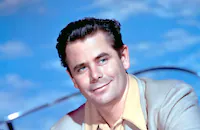
Glenn Ford

Marguerite Chapman

Edgar Buchanan

Leo Gorcey

Regis Toomey

Ed Brophy
Warren Ashe
Craig Woods

Curt Bois

Pierre Watkin
Al Hill
Roger Clark
Dean Benton
David Alison
Paul Parry
John Merton
Don Peters
Virginia Sale
Eleanor Counts
Stanley Brown
John Tyrrell
George Magrill
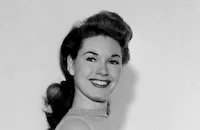
Shirley Patterson
Dale Van Sickel
Jack Gardner
Roy Brent
Pat West
Pat O'malley
Gertrude Messinger

Addison Richards
Edmund Cobb
George Sherwood
Eddy Waller
Billy Bletcher
Lester Dorr
Bud Geary
Stephen Keyes
David Mckim
Frank Beckford
Charles Sherlock
Eddie Hall
George Bruggeman
Eddie Foster
Eddie Dew
Mauritz Hugo
Don Mcgill
Gene Rizzi
Ronnie Rondell
Lynton Brent
Frank Melton
Tristram Coffin
Roy Darmour
Frank Wayne
Clark Ross
Jerry Franks
Eddie Coke
Billy Young
Gerald Pierce

Bobby Jordan
Gerald Pierce
David Holt
Mel Schubert
Lloyd Hanson
Neil Reagan

Larry Parks
Eddie Chandler
David Newell
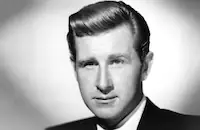
Lloyd Bridges
John Estes
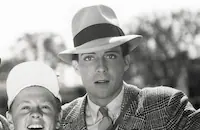
Dennis Moore
Bob Milton
Mickey Rentschler

Charles Mcgraw
Eddie Hearn

Alma Carroll
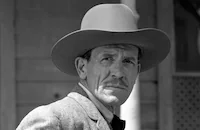
Kenneth Macdonald
Crew
Dave Allen
Lionel Banks
Ed Bernds
Milton Carter
Borden Chase
Anthony Collins
Louis F. Edelman
Ray Enright
Gene Havlick
Lewis Meltzer
Aaron Nibley
Cary Odell
Franz F. Planer
Lt. Comm. H. D. Smith U.s.n.
M. W. Stoloff
Frank [a.] Tuttle
Frank Wead
Frank Wead

Photo Collections
Videos
Movie Clip


Trailer
Film Details
Technical Specs

Articles
Destroyer
For the first film, Destroyer (1943), the plot focused on the crew of a torpedoed ship that fights to take out an enemy sub. Robinson had had prior navy experience in World War I so he was right at home in this war drama. Recalling that period, he said, "I can best sum up my hitch in the navy by admitting that I learned more about ships and navigation and the fleet from a picture I made years later - Destroyer, with Glenn Ford - than I ever learned at Pelham Bay. I also learned to make a knot. I did all kinds of clerical and K.P. chores, worked on the coal pile doing what was widely known as shovel arms, even once got to get on the water (in a rowboat), earned three stripes as a first class seaman (though by no stretch of the imagination could I agree with the rating), and waited endlessly to be informed that I was to be sent to Washington to enter naval intelligence."
Robinson had gone to Columbia to make Destroyer, one of his few ventures into war pictures. According to Alan L. Gansberg in Little Caesar: A Biography of Edward G. Robinson (Scarecrow Press), Robinson "portrayed a middle-aged perfectionist in charge of a group of sailors who becomes a hero by manning a gun during a sea battle with Japanese. The critics recognized Destroyer for the piece of propaganda fluff it was, but Robinson was unconcerned. Instead, he went back to Universal for the first time in more than a decade and received top billing for Flesh and Fantasy, in which he appeared in one of three one-act plays produced by Charles Boyer and directed by Julien Duvivier (brought to America one step ahead of the Nazi invasion of France)."
Producer: Louis F. Edelman
Director: William A. Seiter
Screenplay: Borden Chase, Lewis Meltzer; Frank Wead (screenplay & story)
Cinematography: Franz F. Planer
Art Direction: Lionel Banks
Music: Anthony Collins
Film Editing: Gene Havlick
Cast: Edward G. Robinson (Steve Boleslavski), Glenn Ford (Mickey Donohue), Marguerite Chapman (Mary Boleslavski), Edgar Buchanan (Kansus Jackson), Leo Gorcey (Sarecky), Regis Toomey (Lt. Cmdr. Clark), Ed Brophy (Casey), Warren Ashe (Lt. Marton)
BW-99m.

Destroyer
Quotes
Trivia
Notes
The working title of this film was Destroyer Men. The film's prologue acknowledges the cooperation of the "officers and men of the U.S. Destroyer Base and U.S. Naval Training Station at San Diego, CA." The prologue describes the destroyers as "proud little ships because they bear the name of great heroes of the service and keep alive the fighting traditions of the Navy." News items in Hollywood Reporter yield the following information about the film's production: Janet Blair was initially slated to play "Mary." Although a pre-production news item claims that Gus Schilling was to play a principal role, he does not appear in the final film. Craig Woods made his film debut in this picture. Leo Gorcey was borrowed from M-G-M for the production.
The sets for the film, which occupied four sound stages, were designed according to Navy specifications for warcraft. Lt. Comm. Donald Smith, the film's technical advisor, served as Navigation Officer on the U.S.S. Arizona until one month before the ship was sunk at Pearl Harbor. Ray Enright was assigned to shoot additional battle scenes because the film's original director, William Seiter, was working on a project at RKO. Edward G. Robinson and Marguerite Chapman reprised their roles in a Lux Radio Theatre broadcast on April 3, 1944, co-starring Dennis O'Keefe.















